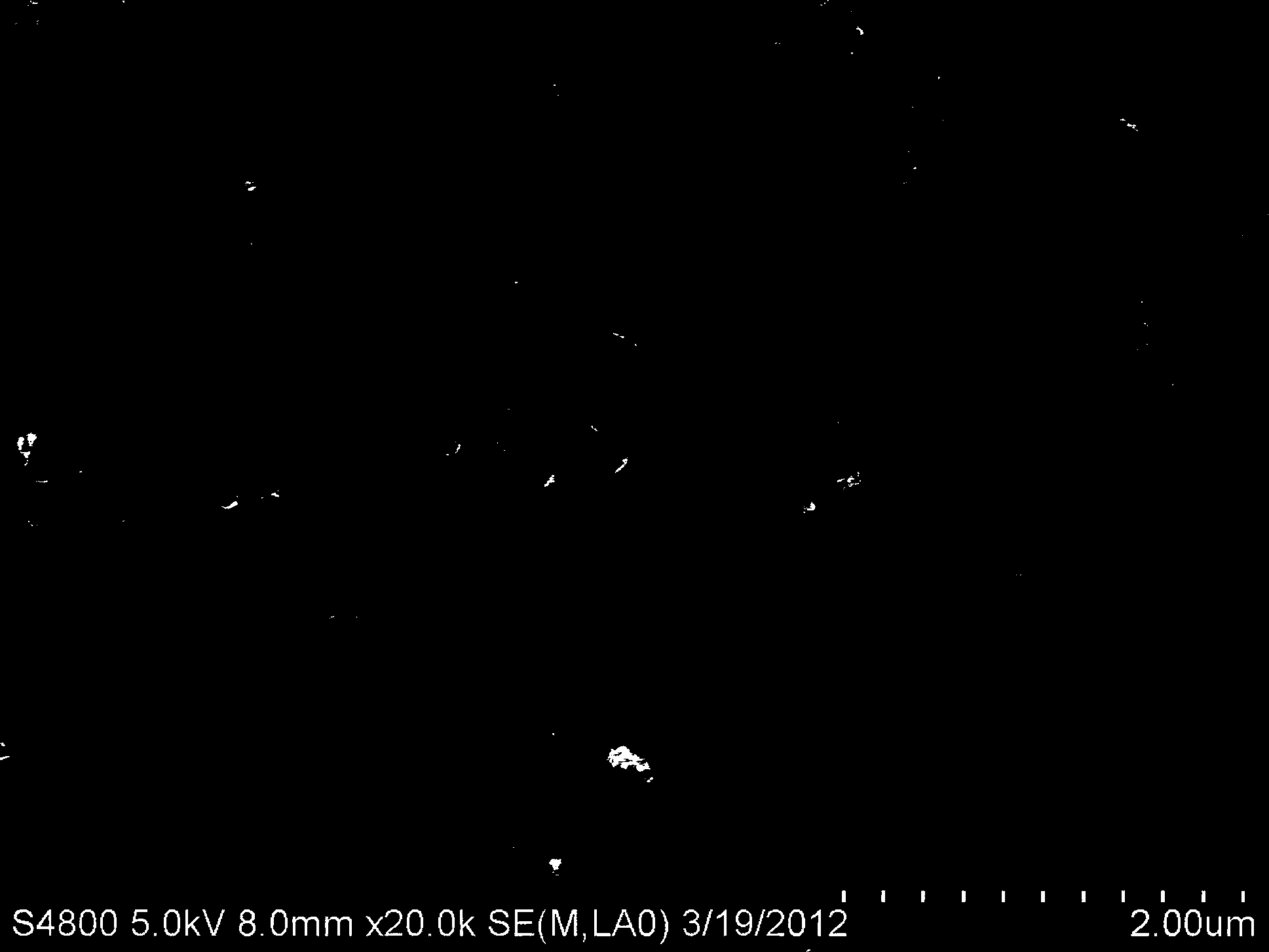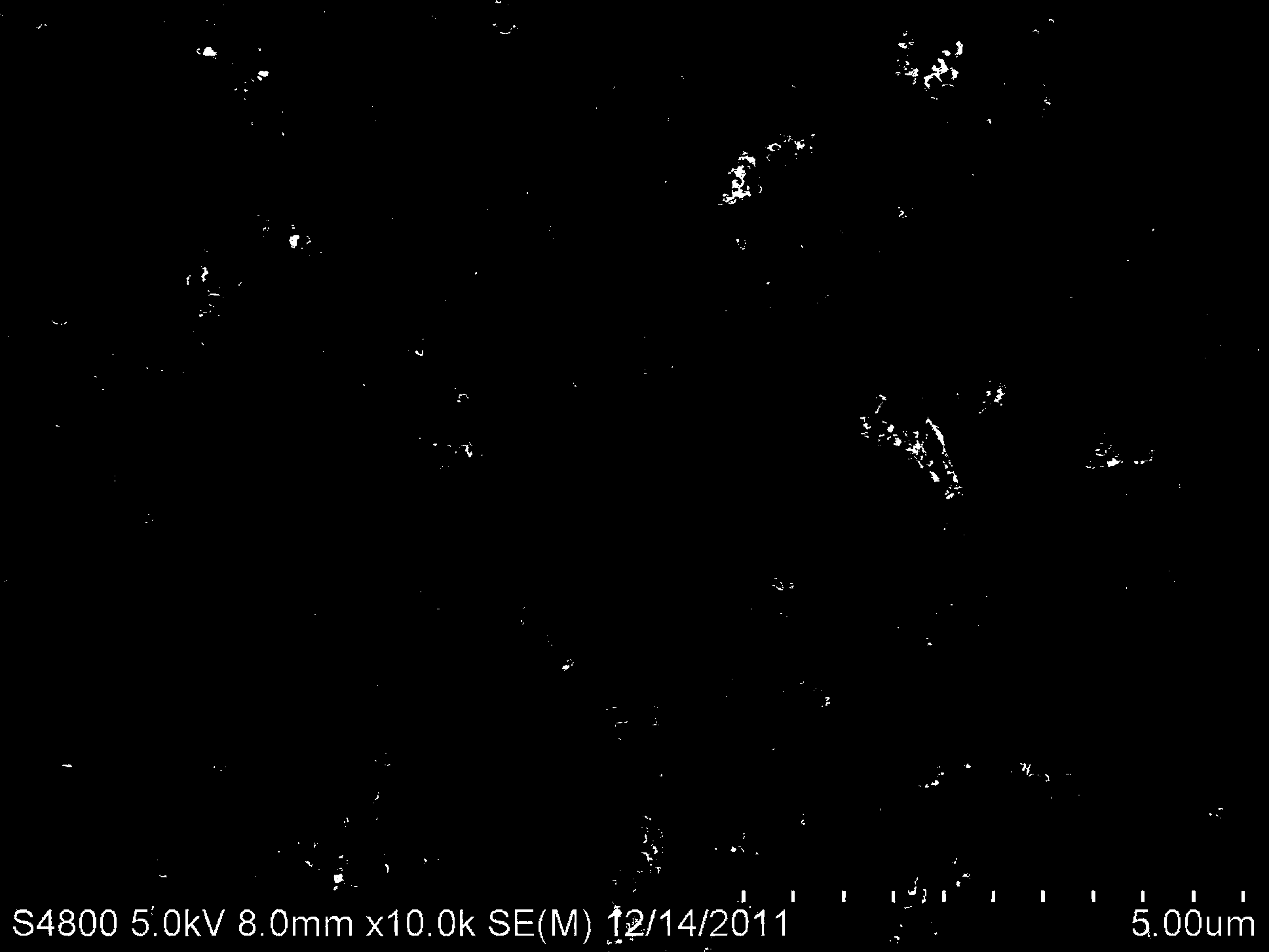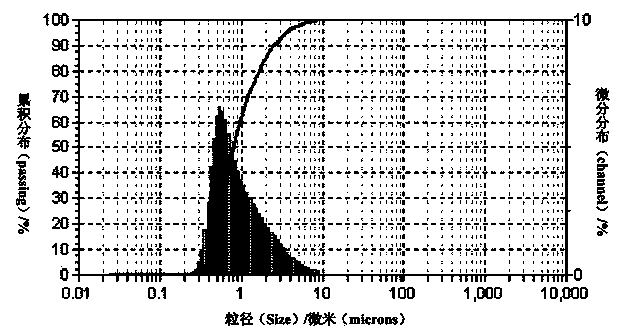Recovery method of positive active material in lithium ion battery waste material
A positive electrode active material and lithium-ion battery technology, applied in the field of lithium-ion batteries, can solve the problems of unsatisfactory capacity and low charge-discharge efficiency of lithium-ion secondary batteries
- Summary
- Abstract
- Description
- Claims
- Application Information
AI Technical Summary
Problems solved by technology
Method used
Image
Examples
Embodiment 1
[0030] Take 200g of waste lithium iron phosphate positive electrode, put it into a material tray, put it into a high-temperature resistance furnace under an Ar gas atmosphere, heat-treat it at a furnace temperature of 450°C for 2 hours, then cool with the furnace, and sieve to obtain the detached active powder material, and then put the detached active powder material into the material tray, put it into a high-temperature resistance furnace under the protection of Ar gas atmosphere, and sinter at a high temperature of 725 °C for 4 hours, and then cool with the furnace at a cooling rate of 2.0 °C / min, the lithium iron phosphate cathode active material sample S1 was obtained after jet milling.
[0031] The sample S1 was tested by an X-ray diffractometer of the Rigaku D / MAX2200PC type in Japan, and the obtained diffraction pattern was as follows image 3 As shown, it can be seen from the figure that the diffraction peak is sharp, its peak intensity is 13750CPS, and its half-peak...
Embodiment 2
[0033] Get 200g of dried waste lithium iron phosphate positive slurry, put it into a tray, put it into N 2 In the high-temperature resistance furnace under the gas atmosphere, heat treatment at the furnace temperature of 400 ° C for 6 hours, then cool with the furnace, and then put it in the N 2 In a high-temperature resistance furnace under the protection of an air atmosphere, sinter at a furnace temperature of 700°C for 2 hours, then cool with the furnace at a cooling rate of 5°C / min, and ball mill to obtain a lithium iron phosphate cathode active material sample S2.
[0034] The obtained sample S2 is tested using the same X-ray diffractometer and scanning electron microscope used in Example 1 respectively, and the obtained XRD diffraction pattern is the same as image 3 Basically similar, the obtained scanning electron microscope picture is as figure 1 Basically similar. The diffraction peaks of the tested XRD diffraction pattern are all lithium iron phosphate diffraction...
Embodiment 3
[0036] Take 200g waste lithium iron phosphate positive electrode, put it into the material tray, put it into H 2 and N 2 Mixed gas (by volume ratio H 2 / N 2 =5:95) in the high-temperature resistance furnace under the atmosphere, heat treatment at the furnace temperature of 425°C for 4 hours, then cool with the furnace, sieve the detached active powder material, and then put the detached active powder material into the tray , and then placed in a high-temperature resistance furnace under the protection of Ar gas atmosphere, sintered at a furnace temperature of 750°C for 6 hours, and then cooled with the furnace at a cooling rate of 0.5°C / min. S3.
[0037] The obtained sample S3 is tested using the same X-ray diffractometer and scanning electron microscope used in Example 1 respectively, and the obtained XRD diffraction pattern is the same as image 3 Basically similar, the obtained scanning electron microscope picture is as figure 1 Basically similar. The diffraction peak...
PUM
| Property | Measurement | Unit |
|---|---|---|
| D50 | aaaaa | aaaaa |
| D50 | aaaaa | aaaaa |
| D90 | aaaaa | aaaaa |
Abstract
Description
Claims
Application Information
 Login to View More
Login to View More - R&D
- Intellectual Property
- Life Sciences
- Materials
- Tech Scout
- Unparalleled Data Quality
- Higher Quality Content
- 60% Fewer Hallucinations
Browse by: Latest US Patents, China's latest patents, Technical Efficacy Thesaurus, Application Domain, Technology Topic, Popular Technical Reports.
© 2025 PatSnap. All rights reserved.Legal|Privacy policy|Modern Slavery Act Transparency Statement|Sitemap|About US| Contact US: help@patsnap.com



